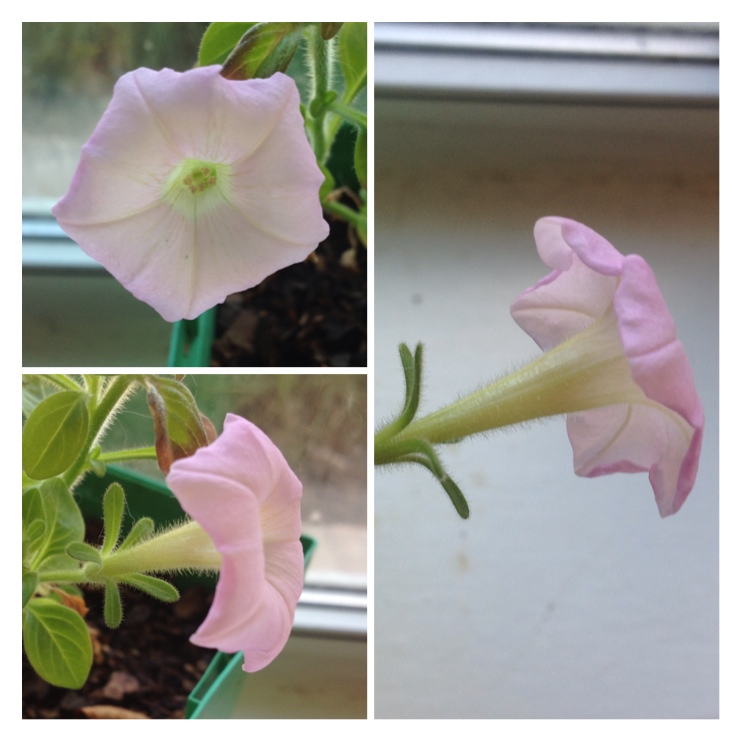I think one of the venues in which to experiment in an attempt to fill is the “green” landscaping, xerascaping, permaculture and low maintenance gardens that people are starting to consider more and more. Sort of amp up the no-spray utilitarian usage and I mean utilitarian in a “smart, natural, beneficial” way not so much “bedding plant” way. Sort of make the rose wild again…but not.
My generation (I’m 24) generally don’t own property and we probably won’t be for a while due to the economy and the boomer’s (sorry guys) are making it difficult for us to get into fields even with bachelor’s degrees (hoop hoping through unpaid internships that last 6-12 months etc) however many in more urban areas are community garden minded and many are into design and are into architecture and do garden design/are in that field, try to buy local produce, slow-food, etc. When they do have property I feel they are gardening more, at least it feels like they are starting to again; especially young families who have bought property. But it’s not generally ornamental. It’s more homesteading. It’s food. The roses and ornamentals are #2 on the list; people want to EAT stuff.
A lot of the old OGR and spring yellow blooming species that are tough as nails that get scorned by most people generally WOULD interest them; however size and showiness are both turn offs. Most are too big and not showy enough (bloomtime) for a lot of modern tastes. However that is only partially programed because people still plant lilac, mockorange, flowering quince and spirea etc. I’d like to think a lot of my generation are rather romantic and whimsical than the one before us (a bit more childish overall but in a good way) so pastels and fairy-tale looking roses will eventually be in more demand; however they are still strictly ornamental. Of course blackspot here in MD prevents usage of most elegant older remonant ogr shrubs like teas and most chinas that are foolproof down south and out west. As much as that pains me (Mrs. Dudley Cross’ form, nodding heads, round shape, leaves, it all is pretty much my idealized rose) even with teas and chinas these days we really need to optimize the usefulness of that shrub a bit more.
For instance ‘Knockout’’ here in Maryland and the east coast is pretty fool-proof as are rugosas somewhat in sandier places (they’re nice overall but can get some crud). All you generally see are Knock-Out or Red Knock-Out or Sunny Knock-Out (which I rather like despite its spiny-ness) and a spattering of Kordes. They are nice but they do not have any particular uses other than being pretty. They also get HUGE. That means while attractive they are also something people need to water often or at the least regularly though I’ve seen many do ok on near neglect.
Thus we need to focus on marrying green sustainable “no care” philosophies people are looking for with those said more “flashy” modern colors, scent, possibly edibility and relative 4 season interest.
Tom on here has already has gone this route with his hot pink 3/4 native, 1/4 part HT rose which sort of exemplifies the thicket making shrub outside of rugosa that could appeal to eco-friendly designers looking for “native” East Coast plants to use and provide as bee forage/bank stabilization in wilder parts of a design/peripherals and in drainage ditches (palustis scandens needs to be used more in its own right for that as well) . Kim’s ‘Indian Love Call’ I think is also something that could lead to some interesting things if crossed correctly as it is a good bridge between china-derived repeaters/well balanced species mix and thus probably a good cornerstone to work with and something I’m looking forward to working with.
If we can continue to create tough more compact (1-4 height) interesting shrubs possibly from a well balanced pedigree of said antique rebloomers and modern polyantha/shrubs from Kordes and the like (or start again from scratch with no china blood) and breed them with the old ogrs and shrubs; gallicas, rugosas, spins, roxburghii, hugonis, and primula etc and native US roses in particular (perhaps with careful breeding RRD resistance from bracteata somewhere in there or so we can hope) along with other species we could posit these as more logical choices for general landscaping purposes.
Thus these can supplant traditional spring blooming bushes people still buy in bulk and nursery’s still stock as mentioned before such as flowering quince, lilac, forsythia (while brilliant in color its practically useless the rest of the year/fades into obscurity which does help it but maximizing seasonal interest is a key in being more “green” as the forsythia are otherwise a waste of water) and perhaps for later summer crepe myrtles (which are gorgeous but not terribly beneficial) and firethorn etc. Pushing already existing once bloomers like hugonis or the more shapely and tough varieties/species like roxburghii on top of that could help too as many of those with their ferny foliage look better than these insipid shrubs that don’t do anything after they bloom.
Essentially what we need to do is make the roses similar in usage and appeal to the native rose cousin Aronia as a bedding plant (that seems to be gaining steam as a landscape thing especially dwarf cultivar like ‘Iroquois Beauty’) and Virginia Sweetspire which has gotten very popular over here. Viginia Sweetspire is particularly becoming very ubiquitous around here even in rather “suburban” square and median plantings. I see this as a good thing. Seeing Rhus ‘Gro-Lo’ in similar situations is also nice.
I think many rugosas are already used in this manner a lot on the coasts but if we sort of expand that philosophy?
